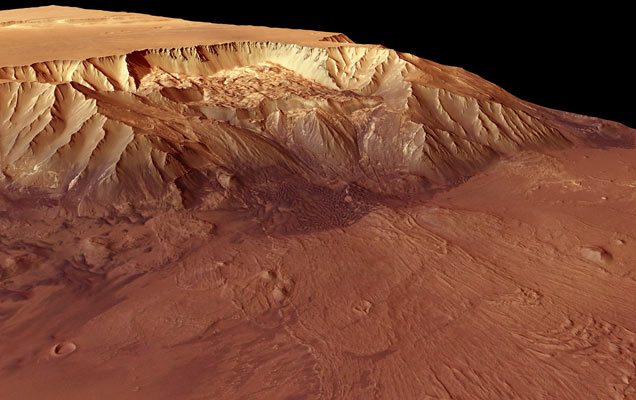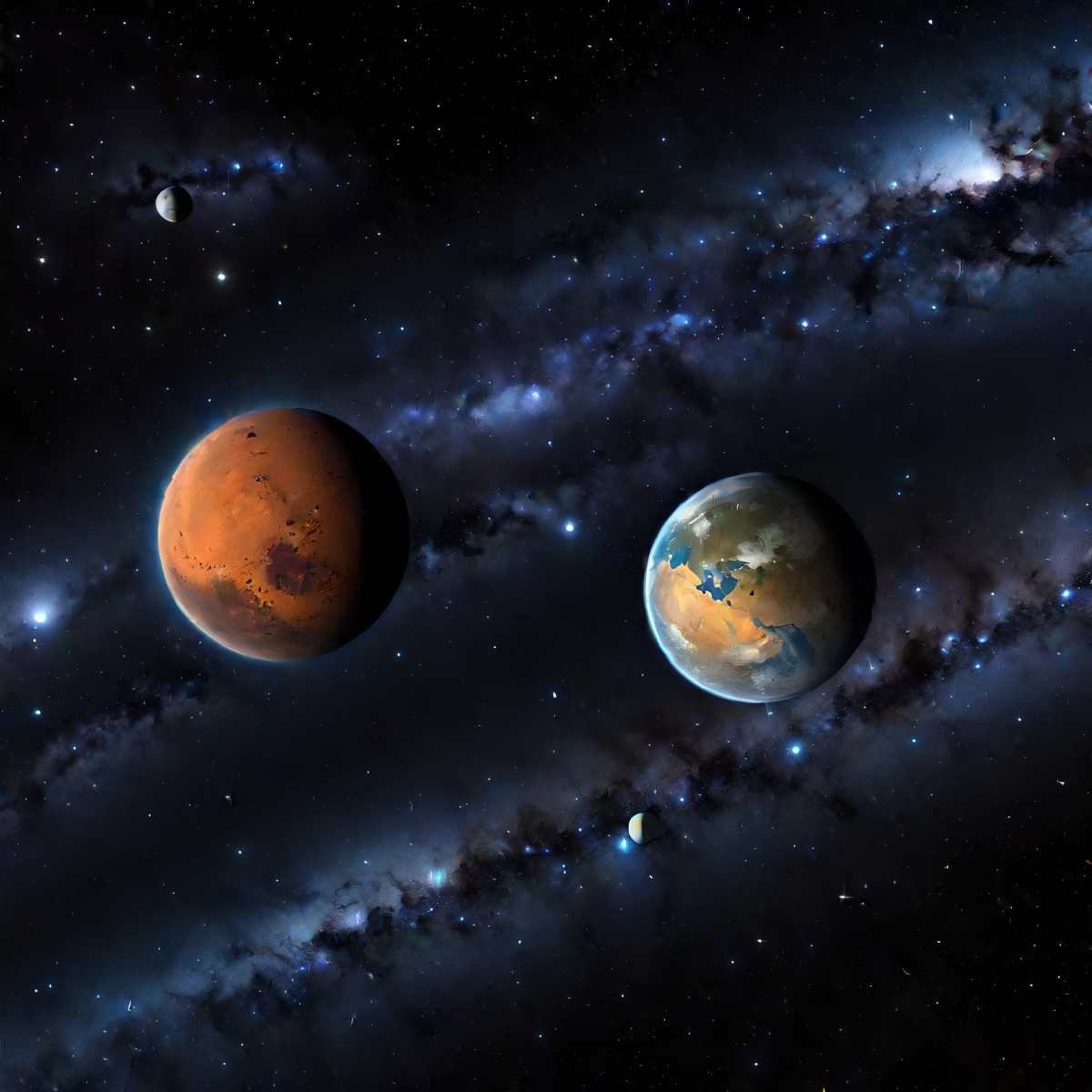Call it the Super-Grand Canyon. Melas Chasma on Mars is 9 kilometers deep in some places, or nearly six times deeper than Earth’s famous landmark on average. How the giant feature was formed, itself one small stretch of the 4000-kilometer-long Valles Marineris rift valley, remains a mystery. But one thing seems evident: water played a role in its history. In this view, one of several images of Melas Chasma released today, a computer has reconstructed 3D images taken with the European Mars Express orbiter’s High-Resolution Stereo Camera. Part of the canyon wall collapsed in multiple landslides in the distant past, with debris fanning out into the valley below. Scientists analyzing the texture of the rocks deposited by the landslides say they were transported by liquid water, water ice, or mud. They also see evidence of sediments in the exposed sides of the canyon, and the lighter-colored rocks apparently are composed of sulfates, another strong sign of a wet martian past.

Mars's Grand Canyon
·1 min
